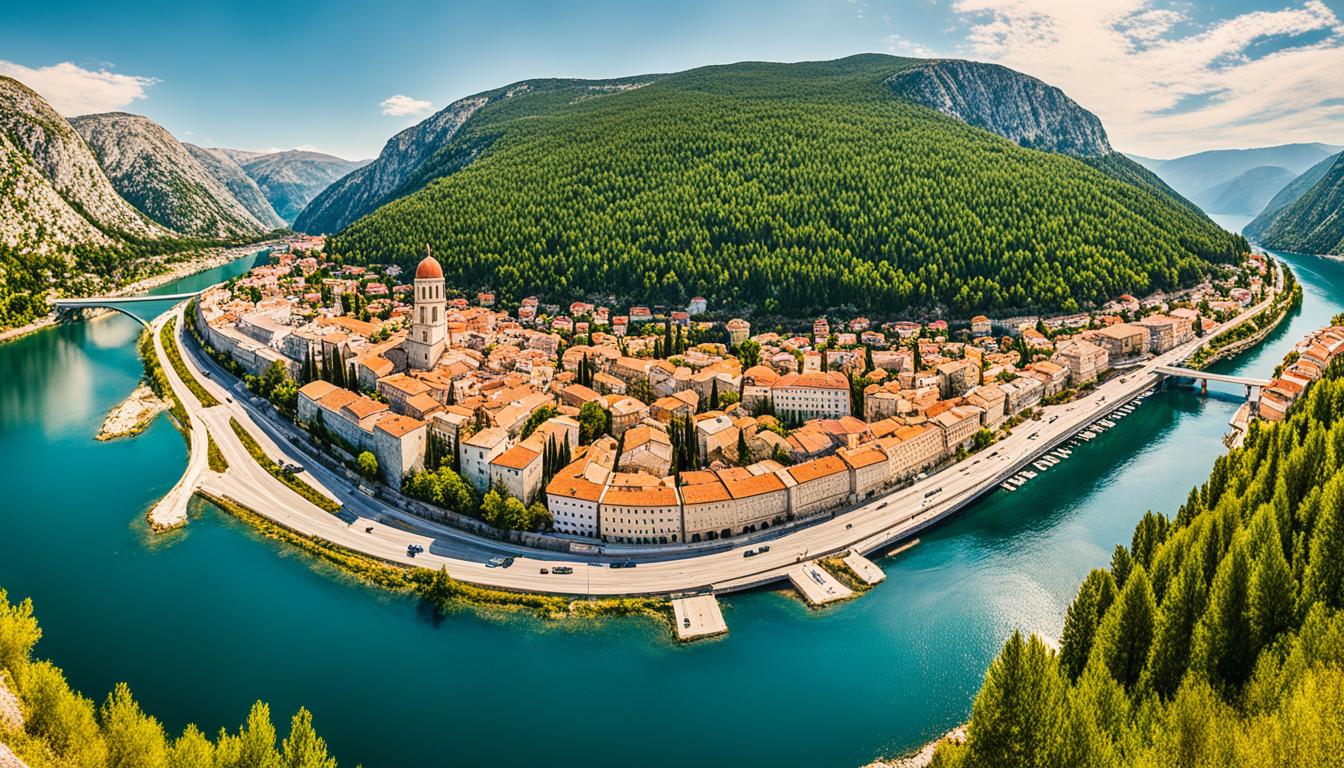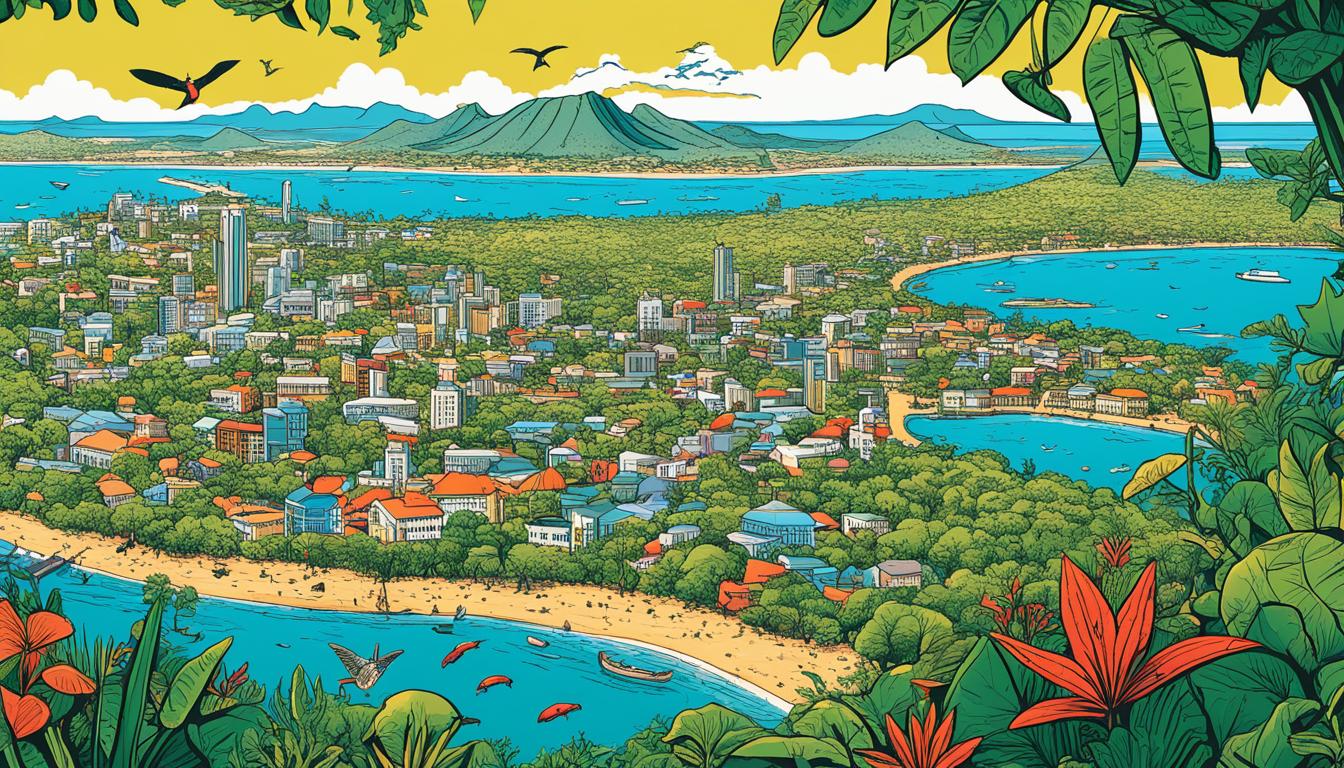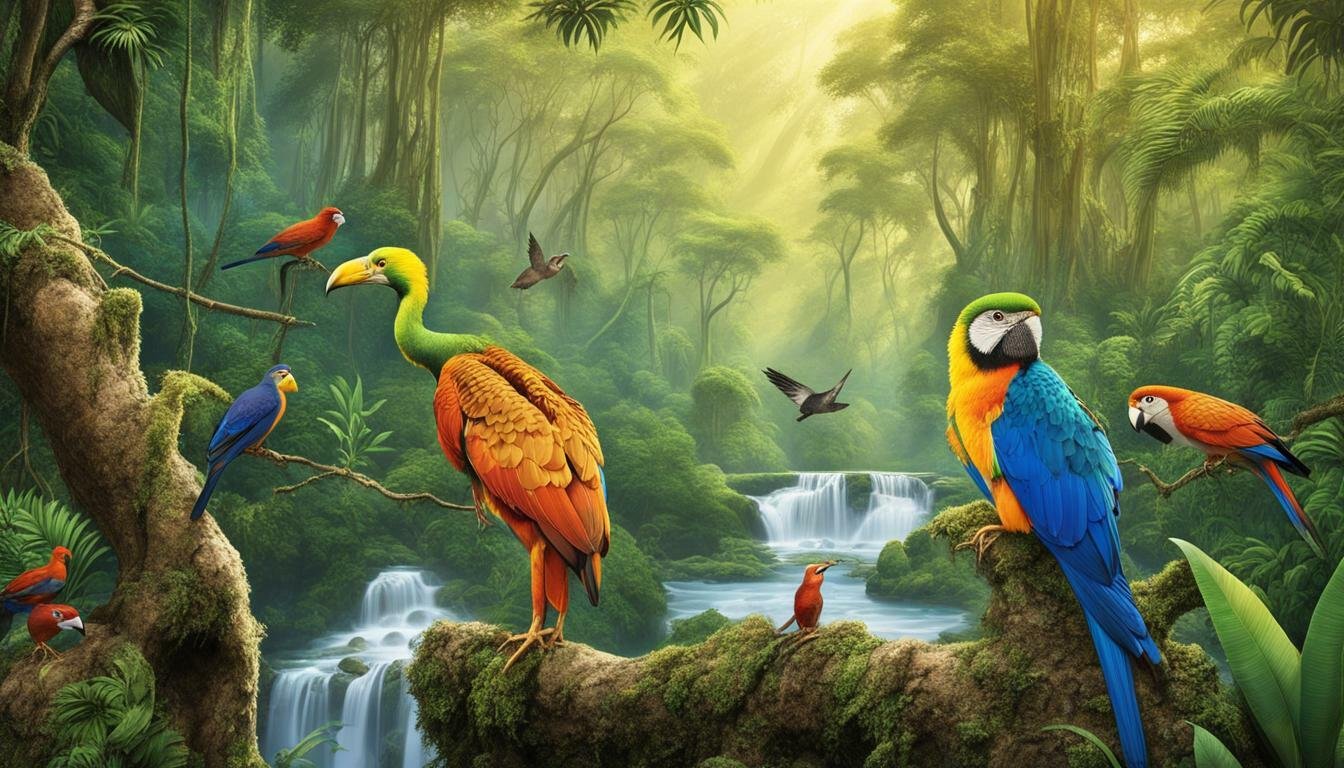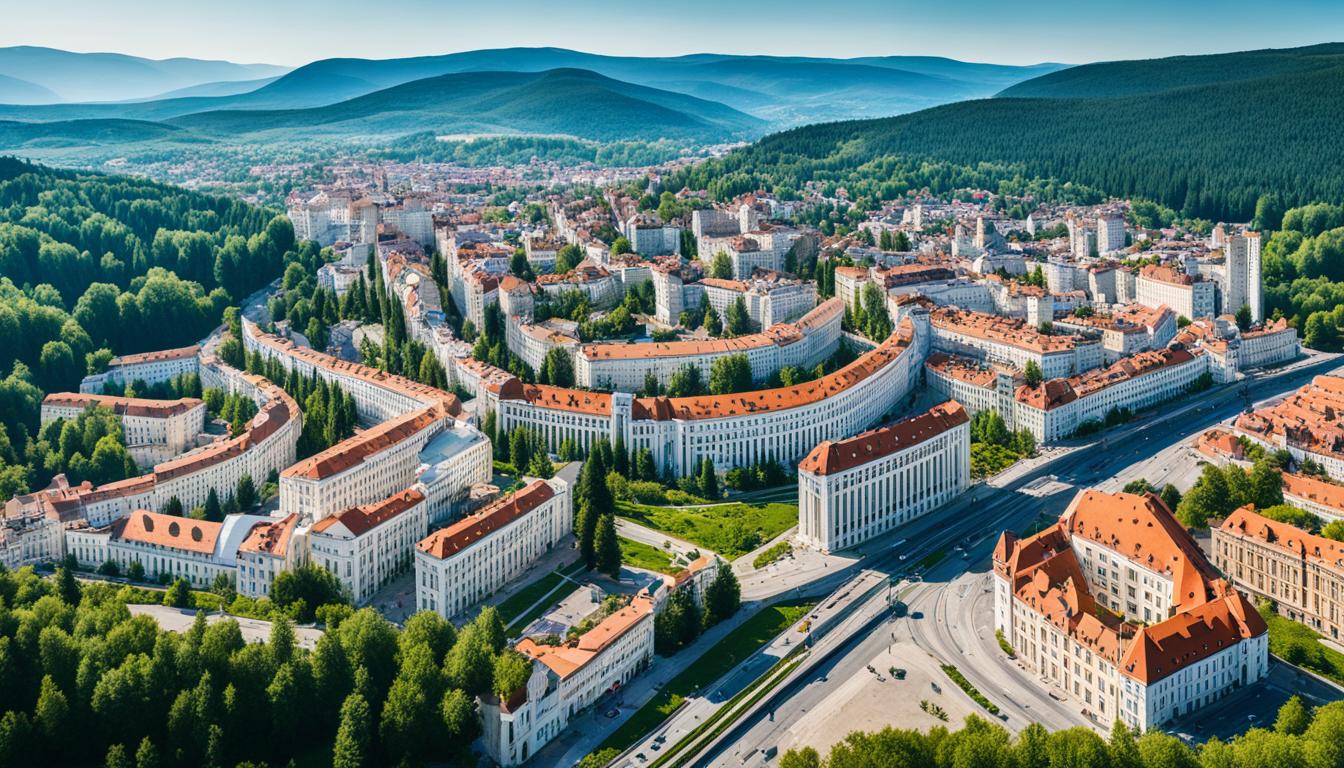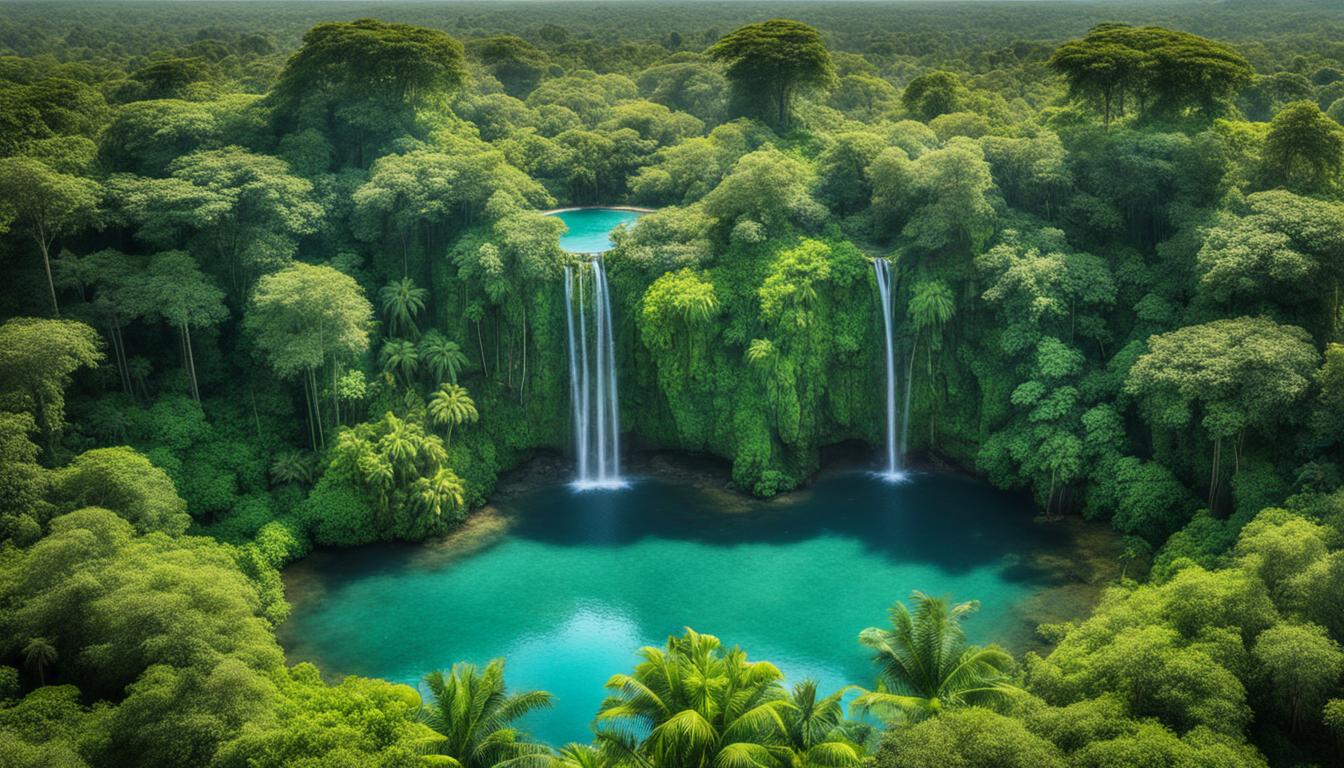Morocco Biodiversity and the Built Environment
Did you know that Morocco is home to over 24,000 animal species and 7,000 plant species? This incredible diversity makes Morocco a haven for wildlife and plants, but it also highlights the importance of sustainable development, environmental conservation, and urban planning to protect this precious biodiversity.
Key Takeaways
- Morocco boasts a vast array of animal and plant species, with over 24,000 animal species and 7,000 plant species calling the country home.
- Sustainable development, environmental conservation, and urban planning are crucial for preserving Morocco’s unique biodiversity.
- Protecting and enhancing biodiversity in Morocco includes initiatives such as green infrastructure, biodiversity assessments, and sustainable architecture.
- Wildlife preservation and sustainable resource management are essential for the long-term sustainability of Morocco’s ecosystems.
- Through collective efforts and community involvement, Morocco is working towards a greener and more sustainable future for its biodiversity and built environment.
The Threats to Morocco’s Biodiversity
Human activities pose significant threats to Morocco’s biodiversity, including habitat destruction, pollution, overexploitation, and the effects of climate change. These activities have led to the identification of over 600 endangered species in the country. To combat these threats and preserve Morocco’s unique flora and fauna, conservation efforts such as protected areas and sustainable resource management are crucial.
Habitat destruction is a primary driver of biodiversity loss in Morocco. The destruction of natural habitats, such as forests and wetlands, deprives species of their homes and disrupts entire ecosystems. This loss of habitat leads to a decline in species populations and the loss of biodiversity.
The continued pollution of air, water, and soil has severe implications for Morocco’s biodiversity. Pollution from industrial activities, agricultural practices, and urbanization can contaminate ecosystems and harm wildlife. It contaminates water sources, impacting aquatic species, and affects the air quality, which can harm plants, animals, and humans alike.
Overexploitation is another serious threat to Morocco’s biodiversity. Unsustainable hunting, fishing, and harvesting of natural resources can deplete populations of species and disrupt the delicate balance of ecosystems. Overexploitation can lead to the extinction of species and the loss of valuable ecological services.
The effects of climate change are also taking a toll on Morocco’s biodiversity. Rising temperatures, changing precipitation patterns, and extreme weather events directly impact ecosystems and species. These changes can disrupt the natural breeding, feeding, and migration patterns of wildlife, jeopardizing their survival.
Morocco’s endangered species list reflects the urgent need for conservation efforts. From the critically endangered Northern Bald Ibis to the vulnerable Barbary Macaque, the country’s iconic species require protection and conservation measures to ensure their survival.
Conservation efforts play a vital role in mitigating the threats to Morocco’s biodiversity. Protected areas, such as national parks and nature reserves, provide safe havens for species and help preserve their habitats. Sustainable resource management practices, such as responsible fishing and forestry techniques, aim to ensure the long-term viability of ecosystems and the species within them. By implementing these measures, Morocco can safeguard its unique flora and fauna for future generations.
Measures to Enhance Biodiversity Conservation in Morocco
Morocco is committed to biodiversity conservation and has implemented various measures to protect its rich natural heritage. These initiatives include the establishment of protected areas, the implementation of species recovery and conservation programs, and the development of a comprehensive National Biodiversity Strategy and Action Plan (NBSAP).
Protected Areas: Morocco has designated numerous protected areas to safeguard its unique ecosystems and species. These areas serve as havens for biodiversity, providing undisturbed habitats for plants and animals to thrive. They also play a crucial role in ecological research, education, and tourism.
Sustainable Resource Management: To ensure the long-term sustainability of its natural resources, Morocco focuses on sustainable resource management practices. This approach involves balancing human needs with the preservation of biodiversity, fostering the wise use of resources while minimizing negative impacts on ecosystems.
National Biodiversity Strategy and Action Plan (NBSAP): The NBSAP provides a comprehensive framework for biodiversity conservation in Morocco. It outlines specific actions, targets, and priorities to address the main challenges faced by the country’s biodiversity. The plan emphasizes the integration of conservation considerations into various sectors, including agriculture, forestry, tourism, and urban planning.
Conservation Programs: Morocco has implemented various conservation programs aimed at protecting endangered species, restoring degraded habitats, and promoting sustainable practices. These programs involve collaboration between government agencies, non-profit organizations, and local communities to achieve their conservation goals.
Local Community Involvement: The involvement of local communities is crucial for the success of biodiversity conservation efforts in Morocco. Engaging communities in natural resource management not only helps protect ecosystems but also fosters a sense of ownership and responsibility. Local communities often have invaluable traditional knowledge and practices that contribute to sustainable conservation practices.
The combination of protected areas, sustainable resource management, the NBSAP, conservation programs, and local community involvement forms a comprehensive approach to enhance biodiversity conservation in Morocco. These measures contribute to the preservation of Morocco’s unique flora and fauna for future generations to enjoy.
The Importance of Wetlands for Morocco’s Biodiversity
Wetlands are invaluable ecosystems that play a critical role in preserving Morocco’s rich biodiversity. These unique habitats, characterized by the presence of water, are home to a diverse array of plant and animal species, making them biodiversity hotspots.
One of the key features of wetlands is their ability to provide essential habitats for migratory birds. These precious areas serve as crucial resting and feeding grounds for birds during their long-distance journeys. Migratory birds rely on wetlands for food and shelter before continuing their arduous journeys.
Moreover, wetlands contribute significantly to water regulation and flood prevention. These areas act as natural sponges, absorbing excess rainwater and reducing the risk of floods. By acting as a buffer zone, wetlands help to regulate the flow of water, ensuring a stable and sustainable water supply for surrounding areas.
However, wetlands in Morocco are facing pressing threats that jeopardize their continued existence. Urban development and land conversion are causing wetland loss and habitat degradation. As these vital ecosystems are transformed into concrete jungles, the diverse flora and fauna that rely on wetlands for survival are being displaced and pushed towards endangerment.
Protecting and preserving wetlands is crucial for maintaining the delicate balance of Morocco’s biodiversity. Conservation efforts that prioritize wetland protection, restoration, and sustainable management are necessary to combat the consequences of wetland loss. By safeguarding these essential habitats, Morocco can ensure the survival of countless species and maintain the ecological integrity of its natural landscapes.
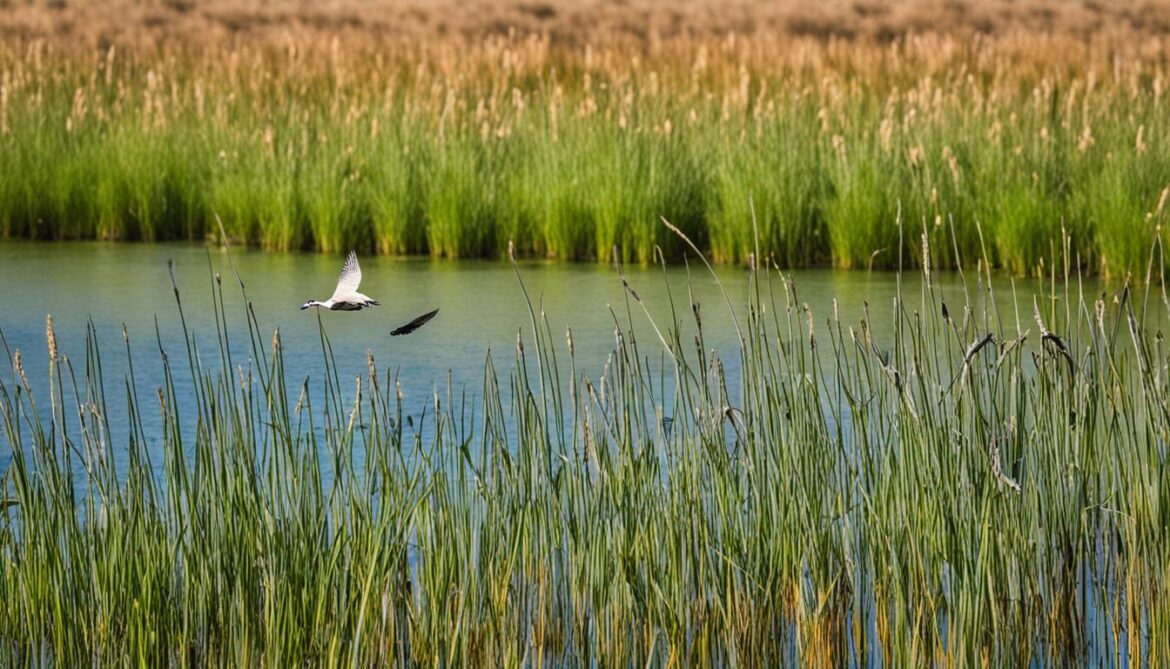
| Importance of Wetlands for Morocco’s Biodiversity | Threats to Wetlands | Conservation Strategies |
|---|---|---|
| Provides important habitats for a wide variety of species | Urban development and land conversion | Wetland protection and restoration |
| Crucial resting and feeding grounds for migratory birds | Habitat loss and degradation | Sustainable wetland management |
| Contributes to water regulation and flood prevention |
The Battle to Protect the Dar Bouazza Wetland in Morocco
The Dar Bouazza wetland in Morocco is currently facing a significant threat from ongoing urban development. This fragile ecosystem, which is home to diverse flora and fauna, is under imminent danger of being irreversibly damaged.
Recognizing the ecological importance of the Dar Bouazza wetland, local non-governmental organizations (NGOs) and grassroots organizations have risen to the challenge, mobilizing efforts to protect this valuable natural heritage. They believe that the wetland deserves national recognition and protection due to its exceptional biodiversity and ecological significance.
However, the battle to protect the Dar Bouazza wetland is not without its challenges. Legal disputes surrounding its ownership and conservation have complicated the conservation efforts. These disputes have shed light on the urgent need for more robust measures to safeguard Morocco’s biodiversity against the encroachment of urban development.
“The Dar Bouazza wetland is an integral part of Morocco’s natural heritage, and its protection is not a choice but a necessity. It is a sanctuary for countless plant and animal species and a vital ecological hub that must be preserved for future generations,” says Dr. Ahmed Rahmani, a renowned environmentalist.
The battle to protect the Dar Bouazza wetland highlights the importance of biodiversity conservation in the face of rapid urbanization and economic development. It serves as a wake-up call for policymakers and stakeholders to prioritize the protection of natural habitats and implement sustainable land-use practices.
To gain a better understanding of the ecological value of the Dar Bouazza wetland and the urgent need for its protection, consider the following table:
| Importance of the Dar Bouazza Wetland | Threats |
|---|---|
| 1. Biodiversity hotspot | 1. Urban development |
| 2. Critical habitat for migratory birds | 2. Habitat degradation |
| 3. Water regulation and flood mitigation | 3. Land conversion |
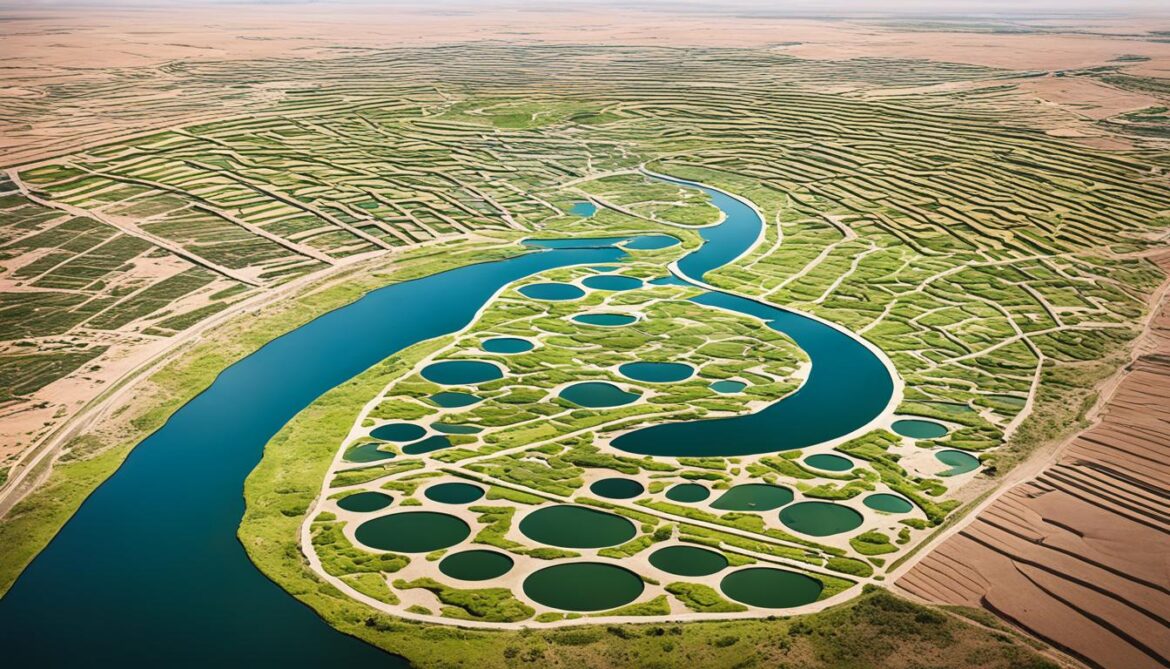
The Dar Bouazza wetland is not only a treasure trove of biodiversity but also an essential resource for the local community and future generations. It is vital that concerted efforts are made to protect and preserve this invaluable wetland, balancing urban development with biodiversity protection for a sustainable and harmonious future.
The Role of Forests in Morocco’s Biodiversity
Forests play a crucial role in maintaining Morocco’s biodiversity, supporting a diverse range of flora and fauna, including endemic species. These lush green spaces are not just beautiful landscapes; they are essential ecosystems that provide habitat to numerous plant and animal species.
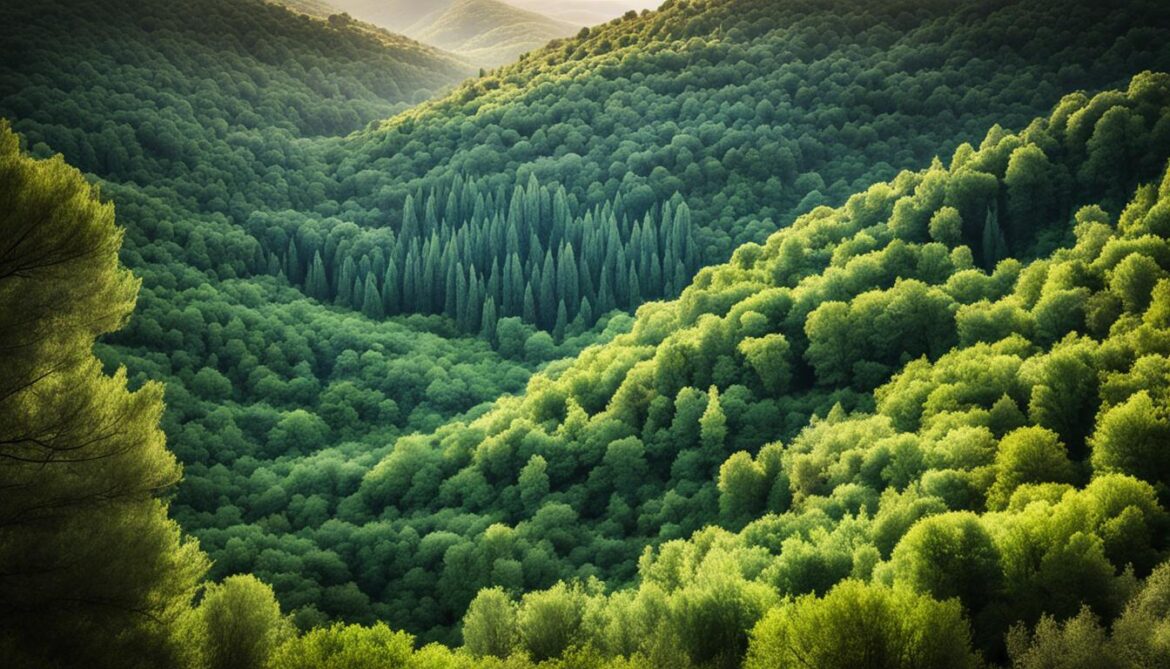
Unfortunately, Morocco’s forests are facing significant threats. Forest degradation and habitat loss are major concerns that directly impact biodiversity. Unsustainable logging practices, land conversion for agriculture, and the expansion of urban areas contribute to the deterioration of forest ecosystems.
It is crucial to implement sustainable forest management practices and prioritize reforestation efforts to combat forest degradation. By adopting responsible logging techniques, protecting natural forest areas, and promoting the restoration of degraded forests, we can preserve and restore the biodiversity of Morocco’s forests.
Importance of Forests for Biodiversity
Forests provide a home for countless species, including endemic species that are unique to specific forest ecosystems. These endemic species are particularly vulnerable to habitat loss and face a high risk of extinction if their habitats are not protected. By conserving forests, we can safeguard these endemic species and maintain the rich biodiversity of Morocco.
The Role of Sustainable Forest Management
Sustainable forest management plays a vital role in preserving biodiversity. It involves employing practices that ensure the long-term viability of forest ecosystems while meeting the economic and social needs of local communities. This includes adopting selective logging methods, protecting biodiversity hotspots within forests, and involving local communities in forest management decisions.
Sustainable forest management is essential for balancing the utilization of forest resources with the preservation of biodiversity. It allows us to meet present needs without compromising the ability of future generations to enjoy the benefits of healthy and diverse forests.
Reforestation Efforts
Reforestation is a crucial step in restoring degraded forests and regaining lost biodiversity. It involves planting trees in areas where forests have been cleared or destroyed. Reforestation not only helps to combat deforestation but also provides habitat for wildlife, contributes to climate change mitigation, and supports sustainable livelihoods for local communities.
Celebrating Morocco’s Forests
Morocco is blessed with diverse forest ecosystems, ranging from the cedar forests of the Middle Atlas to the cork oak forests of the Rif Mountains. These forests are home to an array of flora and fauna, from majestic Atlas cedars to endangered Barbary macaques.

By recognizing the value of forests and taking collective action to protect and manage them sustainably, we can ensure the preservation of Morocco’s unique plant and animal species. Together, let’s safeguard our forests and secure the biodiversity that they hold.
Morocco’s Top Green Buildings
Morocco is at the forefront of sustainable architecture and green construction projects. The country is renowned for its eco-friendly designs that prioritize environmental friendliness and contribute to sustainable development. From Marrakech to Rabat, a number of top green buildings have emerged as shining examples of eco-consciousness.
Les Jardin Des Medina, Marrakech
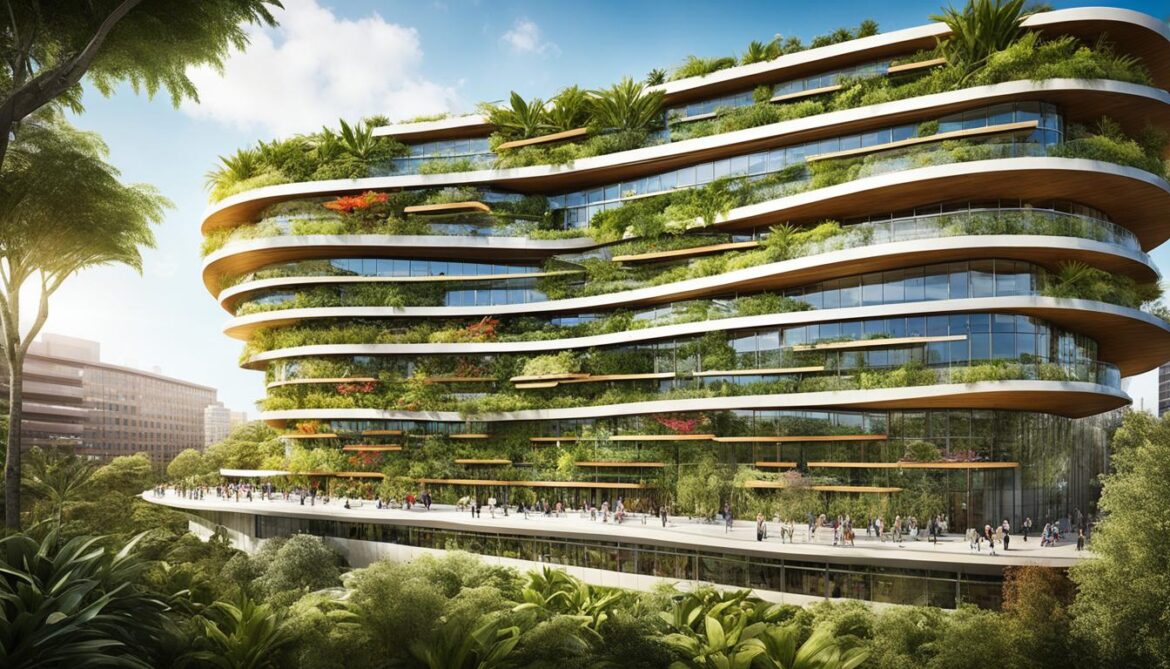
“Les Jardin Des Medina in Marrakech showcases an innovative design that seamlessly blends traditional Moroccan architecture with modern sustainability concepts. From its eco-friendly construction techniques to its energy-efficient practices, this green building has earned significant recognition in the industry.”
Les Jardin Des Medina offers a tranquil retreat in the heart of Marrakech, with its lush gardens and delightful rooftop views. The establishment has also been awarded the prestigious Green Key Label, further solidifying its commitment to eco-consciousness.
Tata: Dar Infaiane, Marrakech
“Tata: Dar Infaiane in Marrakech stands as a remarkable example of how sustainable design can harmoniously integrate with Moroccan heritage. This green building prioritizes eco-friendly practices and supports the local community through collaborations with local artisans and sourcing locally produced food.”
Tata: Dar Infaiane showcases eco-friendly designs that blend seamlessly with traditional Moroccan architecture. The establishment has also received the esteemed Green Key Label, emphasizing its dedication to sustainability.
Riad Fes, Fes
“Riad Fes in Fes is a luxury boutique hotel that effortlessly combines elegance with sustainability. Its blend of traditional Spanish Moorish architecture and sustainable design principles creates a truly unique and environmentally friendly establishment.”
Riad Fes offers guests an unforgettable experience with its exquisite gardens, serene atmosphere, and unwavering commitment to eco-consciousness. The hotel’s dedication to sustainable practices has earned it recognition within the hospitality industry.
Riad Laaroussa, Fes
“Riad Laaroussa in Fes is a hidden gem that showcases the charm of Moroccan architecture while prioritizing sustainable practices. This green building provides an intimate and eco-friendly experience for guests, emphasizing the importance of environmental consciousness.”
With its stunning courtyard and eco-conscious initiatives, Riad Laaroussa exemplifies the essence of sustainable design. Guests can enjoy a unique blend of traditional Moroccan hospitality and modern eco-friendly amenities.
| Green Building | Location | Design Principles | Awards and Recognition |
|---|---|---|---|
| Les Jardin Des Medina | Marrakech | Traditional Moroccan architecture combined with modern sustainability concepts | Green Key Label |
| Tata: Dar Infaiane | Marrakech | Eco-friendly designs blending with Moroccan heritage | Green Key Label |
| Riad Fes | Fes | Combination of traditional Spanish Moorish architecture and sustainable design | Awards within the hospitality industry |
| Riad Laaroussa | Fes | Charming Moroccan architecture with a focus on sustainability | Exemplary sustainable design |
Les Jardin Des Medina: A Charming Green Building in Marrakech
Les Jardin Des Medina in Marrakech is a charming green building that has gained recognition for its exceptional design and commitment to sustainability. This eco-friendly architectural masterpiece has been awarded the prestigious Green Key Label, emphasizing its dedication to environmentally conscious practices.
One of the notable features of Les Jardin Des Medina is its breathtaking rooftop views, offering visitors a stunning panorama of Marrakech’s vibrant cityscape. The rooftop terrace serves as a tranquil oasis amidst the bustling city, allowing guests to unwind and appreciate the beauty of their surroundings.
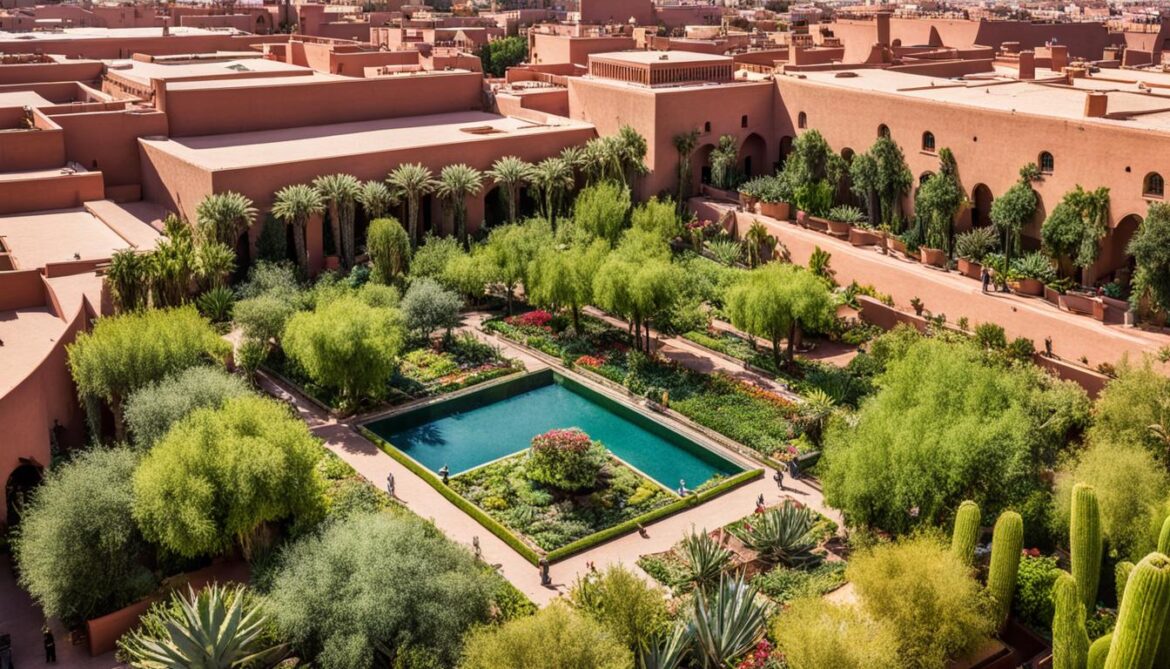
The building’s design seamlessly integrates with nature, creating a harmonious and tranquil garden setting. The interior spaces are adorned with lush greenery, promoting a sense of serenity and connection to the natural world.
Les Jardin Des Medina’s commitment to sustainability extends beyond its design. The building employs a range of eco-friendly practices, including energy-efficient systems, water conservation measures, and the use of locally sourced materials. These initiatives contribute to the reduction of environmental impact and promote responsible resource management.
Les Jardin Des Medina showcases the perfect blend of architectural elegance and environmental consciousness. Its innovative design, along with its Green Key Label certification, places it at the forefront of eco-friendly buildings in Marrakech.
With its dedication to eco-friendly design, Green Key Label certification, rooftop views, and tranquil garden setting, Les Jardin Des Medina serves as a shining example of sustainable architecture in Marrakech.
Dar Infaiane: A Remarkable Green Building in Marrakech
Dar Infaiane in Marrakech is another remarkable green building that showcases the beauty of Moroccan architecture and sustainable design principles. It has received the Green Key Label for its eco-friendly practices. The guest house supports the local community by sourcing locally produced food and collaborating with local artisans.
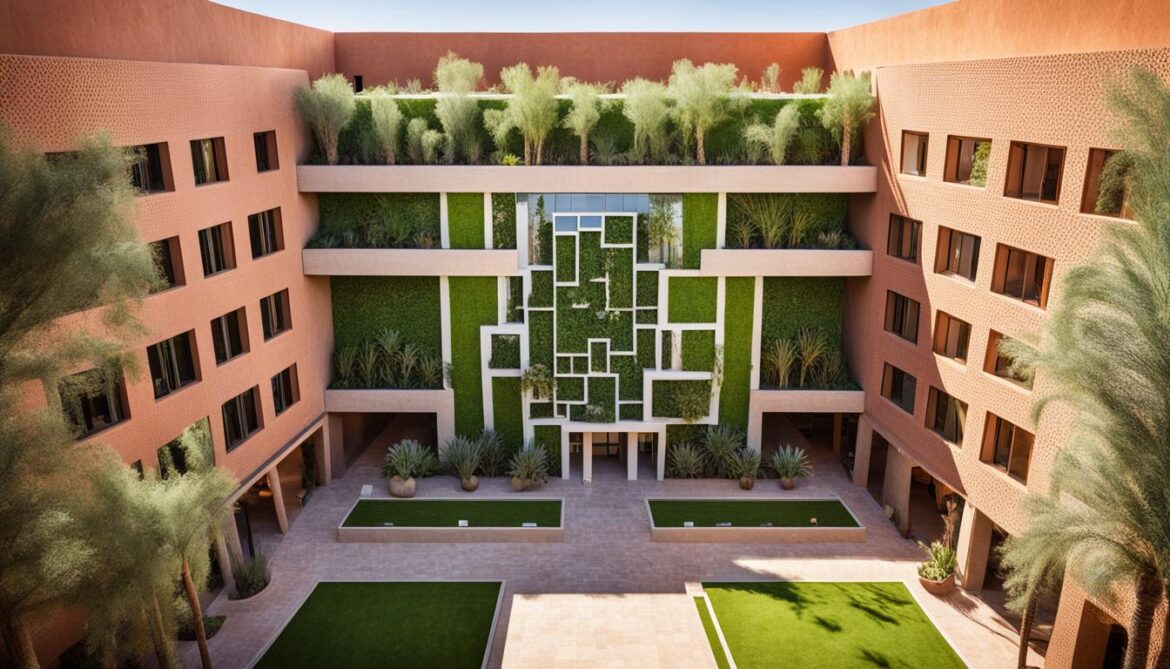
Dar Infaiane is a prime example of how eco-friendly designs can be seamlessly integrated into the fabric of a community while also benefiting the local economy. By prioritizing sustainability and supporting the local community, this exceptional green building sets a precedent for environmentally conscious development in Marrakech.
Riad Fes: Where Elegance Meets Sustainability
Riad Fes, located in the heart of Fes, is a luxury boutique hotel that seamlessly combines traditional Spanish Moorish architecture with modern sustainable design. With its exquisite attention to detail, Riad Fes offers a truly enchanting experience for discerning travelers.
Step inside this architectural masterpiece and be transported to a world of opulence and tranquility. The intricate tile work, arched doorways, and ornate motifs reflect the rich cultural heritage of Morocco. Each room and suite is beautifully appointed to ensure guest comfort and relaxation.
The sustainable design of Riad Fes is a testament to the hotel’s commitment to the environment. From the use of locally sourced materials to energy-efficient systems, every aspect of the hotel’s construction and operation has been carefully considered to minimize its ecological footprint.
“Riad Fes is not only a sanctuary of luxury but also a model of sustainable design. We believe that elegance and sustainability can coexist harmoniously.”
The lush gardens surrounding the Riad provide a serene oasis in the bustling city. Guests can unwind amidst the fragrant flowers and listen to the soothing sound of trickling fountains. The hotel’s dedication to sustainable landscaping ensures the preservation of local flora and fauna.
As a luxury boutique hotel, Riad Fes aims to provide an unforgettable experience for its guests. From the warm and attentive service to the thoughtful amenities, every detail is tailored to exceed expectations. The hotel’s commitment to sustainability extends to its culinary offerings, with an emphasis on locally sourced and organic ingredients.
Experience the epitome of luxury and sustainability at Riad Fes. Immerse yourself in the beauty of traditional Spanish Moorish architecture while knowing that every aspect of your stay is designed with the environment in mind.
Guest Room Amenities:
- Luxurious bedding and linens
- Spacious en-suite bathrooms with eco-friendly toiletries
- Breathtaking views of the Riad’s gardens or the historic city
- High-speed internet access
- Flat-screen TV and entertainment system
- Individual climate control
Hotel Facilities and Services:
- Restaurant serving gourmet Moroccan and international cuisine
- Full-service spa offering rejuvenating treatments
- Outdoor swimming pool
- Fitness center
- 24-hour concierge service
- Complimentary shuttle service to and from the airport
Rates and Reservations:
To make a reservation or inquire about current rates, please visit the official website of Riad Fes or contact their reservation team directly.
| Room Type | Low Season (per night) | High Season (per night) |
|---|---|---|
| Classic Room | £200 | £300 |
| Deluxe Room | £250 | £350 |
| Suite | £350 | £500 |
Indulge in luxury and sustainability at Riad Fes, where elegance meets environmental consciousness. Experience the perfect harmony of traditional architecture and modern design, surrounded by serene gardens and impeccable service. Book your stay today and immerse yourself in a truly unforgettable experience.
Conclusion
Morocco’s rich biodiversity and the built environment are intricately linked. The conservation of natural habitats and the implementation of sustainable practices are vital for preserving the country’s unique flora and fauna. By protecting wetlands, forests, and green buildings, and engaging local communities, Morocco is actively working towards a greener and more sustainable future.
The preservation of Morocco’s biodiversity goes beyond ecological considerations. It is closely tied to the country’s cultural heritage. The diverse ecosystems and species found in Morocco have long been intertwined with the customs, traditions, and beliefs of its people. Protecting biodiversity is not only about safeguarding the environment but also maintaining the identity and legacy of the nation.
Through the establishment of protected areas, active resource management, and the pursuit of sustainable architecture, Morocco is demonstrating its commitment to conservation and sustainability. These efforts not only benefit the environment but also provide economic opportunities and enhance the quality of life for both residents and visitors. By valuing and protecting its natural assets, Morocco sets an example for other nations striving to balance development with the preservation of biodiversity and cultural heritage.




